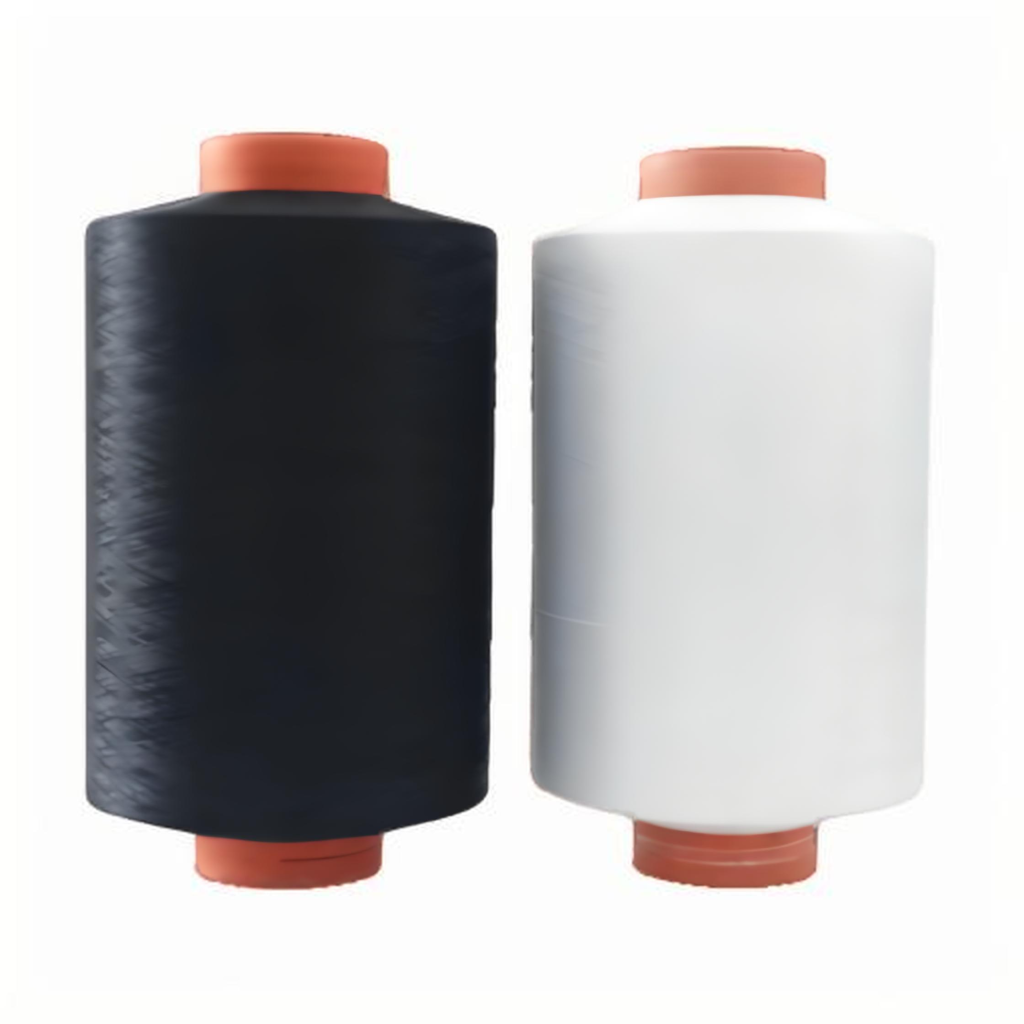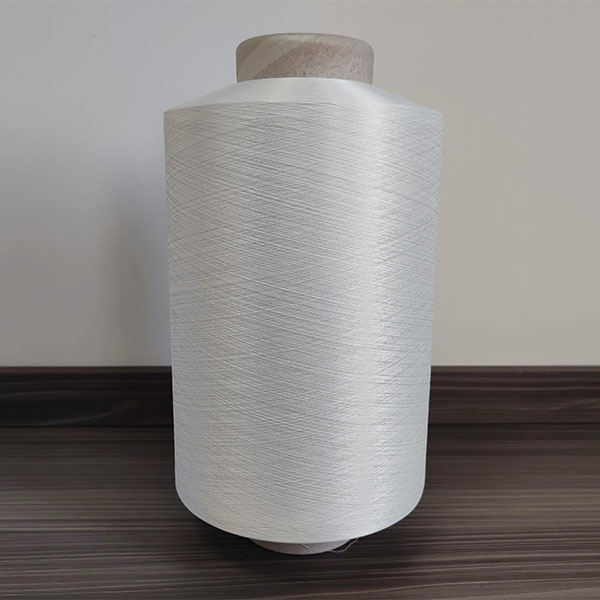In early 2025, federal policy discussions have centered on sustainability in the textile industry, including Polyester DTY. New regulations aim to enhance material safety, reduce environmental impact, and ensure product quality. These updates encourage innovation in textile manufacturing while promoting sustainable practices.
Polyester DTY in the Era of Carbon Accountability
As carbon neutrality commitments accelerate worldwide, the textile industry finds itself at the center of change. From EU carbon tariffs to traceability mandates in the US and sustainability roadmaps across Asia, the pressure is on. Polyester, long prized for its versatility and durability, is not being banned—but it is being transformed.
Polyester DTY (Draw Textured Yarn), in particular, stands at a crossroads. Widely used in sportswear, casualwear, and home textiles, this high-elasticity yarn must now evolve to meet low-carbon, recyclable, and traceable standards. Fortunately, that transition also presents a strategic opportunity.
At textilessupplychain, we believe in turning compliance into competitive advantage. That’s why we’re working with global partners to reshape the value chain of Polyester DTY, from raw material sourcing to carbon footprint reporting.
Global Regulations: What’s Driving the Polyester DTY Shift?
European Union: CBAM & Eco Label Reforms
The EU’s Carbon Border Adjustment Mechanism (CBAM) has entered its transitional phase, requiring emission reporting for imported polyester materials. Simultaneously, the revised EU Ecolabel framework now offers incentives for products containing recycled Polyester DTY, pushing brands to meet a 50% recycled content target by 2027.
United States: Traceability and Recycled Content Mandates
The proposed U.S. Textile Sustainability Act is set to require QR-code labeling for polyester traceability by 2026. Major brands (over $100M revenue) must ensure 25% of their synthetic fiber content is verified as recycled—a challenge and an opportunity for Polyester DTY manufacturers.
Asia: Carbon Neutral Pathways and Water Management
China’s dual-carbon goal (carbon peak by 2030, neutrality by 2060) is promoting technologies like dope dyeing and biomass-based PTA for yarn production. Vietnam and Indonesia are introducing renewable energy certificate systems, pressuring spinning mills to go green. Together, these policies are shaping the carbon and water profiles of Polyester DTY across Asia.

Polyester DTY
Technical Innovation: Four Key Paths for Polyester DTY Upgrades
Energy-Efficient Spinning
Advanced heatbox systems, online POY cooling, and waste heat recovery can cut energy use by 18% per ton of Polyester DTY. When combined with renewable electricity, total indirect emissions can drop by over 30%—a significant value-add for brands conducting Life Cycle Assessments (LCA).
Recycled Content & Closed-Loop Fibers
Recycled Polyester DTY, produced via bottle flake or chemical depolymerization, emits up to 45% less CO₂ than virgin yarn. With a minimum 65% post-consumer content, these yarns qualify for certifications like GRS or ISCC+, helping global brands meet their ESG goals.
Water-Free and Chemical-Low Dyeing
Supercritical CO₂ dyeing allows pigments to bond with Polyester DTY directly, reducing water use by 98% and eliminating salt discharge. When paired with zero-auxiliary formulations, these solutions align with OEKO-TEX restricted substances lists.
Functionality + Microplastic Reduction
Through anti-pilling treatments and bio-based co-polymerization, low-shedding DTY yarns release fewer than 10 mg/kg microfibers over product life cycles—meeting France’s pending 2025 laundry microplastic restrictions and appealing to premium apparel labels.
Real-World Applications: Polyester DTY in Sustainable Product Lines
-
High-elastic DTY yarns are used in yoga pants and stretch denim, offering both performance and compliance with carbon labeling schemes.
-
Closed-loop backings for carpets made from recycled Polyester DTY can be thermally fused and recycled as a whole.
-
OEKO-TEX certified DTY is being rapidly adopted in infant and maternity wear, with brands using certification codes as a selling point.
-
Low-carbon DTY yarns are now required for exports to Europe, Turkey, and Italy to comply with Extended Producer Responsibility (EPR) systems.

Wholesale Polyester DTY
Supply Chain Solutions from textilessupplychain
At textilessupplychain, we offer a comprehensive support ecosystem for businesses upgrading their Polyester DTY procurement:
-
Carbon Data Vaults
Batch-specific carbon footprint (CFP) reports, compatible with EU CBAM and other global disclosures. -
Recycled Feedstock Sourcing
Access to reliable PET bottle flakes and post-industrial waste from Korea, Japan, and North America. -
Global Regulation Monitoring
Live updates on GRS, TRACI, Blue Angel, and other frameworks affecting Polyester DTY applications. -
Functional Yarn Customization
Dope dyed, anti-bacterial, or moisture-wicking DTY in deniers from 30D to 600D and twist range 400–1200 TPM. -
Digital Traceability Systems
Blockchain-based tracking of yarn batches, enabling QR-code access to production energy and recycled content data.
Frequently Asked Questions
Will Polyester DTY be banned like single-use plastics?
No. Apparel-grade polyester is not subject to bans like straws or bags. However, the focus is now on its carbon footprint and recyclability, especially in export-oriented markets.
How do I verify recycled content in DTY yarns?
Through third-party certifications like GRS (Global Recycled Standard), RCS (Recycled Claim Standard), or ISCC+ with molecular trace testing.
Is green upgrading prohibitively expensive?
Energy efficiency upgrades (e.g., heatbox, waste heat recovery) pay back within 2.8 years. Recycled feedstock costs may be offset within 18 months through carbon premium sales. Financing options are available via textilessupplychain.
What certifications are needed for EU exports?
Beyond fiber labeling, exporters should include EU Timber Regulation statements (if pulp is used), PFC-Free declarations, and product-level Digital Product Passports (DPPs) by 2026.
Looking Ahead: A Sustainable Future for Polyester DTY
The future of Polyester DTY is not extinction—it is evolution. While governments worldwide push for lower emissions and circularity, polyester remains a versatile material capable of transforming into a low-impact, high-performance solution.
Through technologies like chemical recycling, green hydrogen PTA, and AI-powered spinning analytics, polyester’s footprint is shrinking. Early adopters who invest in low-carbon transformation today will be tomorrow’s winners—benefiting from lower tariffs, stronger consumer loyalty, and preferential sourcing by brands.
At textilessupplychain, we’re proud to co-create this future with our partners. From fiber to finish, we ensure your Polyester DTY story is one of sustainability, performance, and market leadership.

Polyester DTY Suppliers
In a world rapidly transitioning toward carbon neutrality and circular business models, Polyester DTY is undergoing a strategic rebirth. It’s no longer just about performance or cost—it’s about responsibility, transparency, and adaptability.
Global policies like CBAM, EPR mandates, and eco-label requirements are not designed to eliminate polyester but to enhance its lifecycle performance. These shifts call for new sourcing logic, improved manufacturing techniques, and integrated traceability.
At textilessupplychain, we believe the future belongs to supply chains that are not only efficient but also ethical and resilient. We’ve invested in the tools, partnerships, and expertise to help you navigate this new reality—whether that means sourcing GRS-certified recycled Polyester DTY, integrating LCA-backed products into your catalog, or future-proofing your exports for carbon accountability.
With climate-conscious consumers and compliance frameworks rising, switching to sustainable Polyester DTY is more than a compliance box to tick—it’s a statement of brand purpose and long-term foresight.
Noticias anteriores
Navigating Policy and Innovation: The Sustainab...Next News
Tendencias de la política mundial del hilo de poliéster 2025 e In...
Por hilo
Producto estrella
-
 Hilo de poliéster DTY 100D/144F
Hilo de poliéster DTY 100D/144FHilo de poliéster DTY 100D/144F: la guía definitiva...
-
 Hilo de poliéster DTY 100D/96F
Hilo de poliéster DTY 100D/96FHilo de poliéster DTY 100D/96F: el hilo suave y estable...
-
 DTY 75D/144F SIM Hilo de poliéster
DTY 75D/144F SIM Hilo de poliésterDTY 75D/144F SIM Hilo de poliéster: La mejor elección...